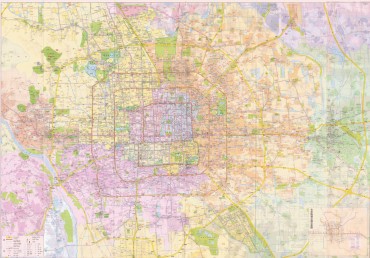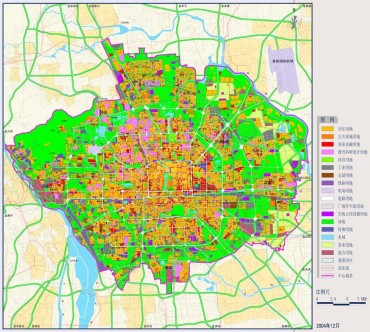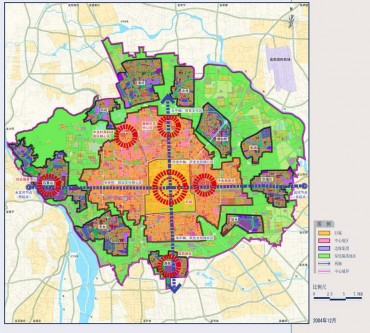
Beijing Map in 1950

Beijing Map in 2006

Beijing urban planning 2004-2020

Beijing urban planning 2004-2020

Diagram of Beijing skyline and land value
4.3.2013 – Issue 11 - Made In China – Wang Lu , Wenyi Zhu, Xiaodong Li – Interviews, Videos
URBAN DEVELOPMENT IN BEIJING
Interview with Wang Lu, Li Xiaodong and Zhu Wenyi
Tradition in the Beijing urban development
ZHU WENYI: From the viewpoint of urban space or urban design, a lot of things are related to tradition; they have not disappeared and still alive. The Chinese architecture and city, as same as the Chinese food, is a part of Chinese culture that are different from the West, or from the Africa. I think the urban space should be understood in this way.
WANG LU: Our tradition is heavy. Its structure in the political and economical sense is actually so different from the West. After the culture revolution the Chinese wanted to develop with the strategy of “mozhe shitou guohe”, a sentence from Deng Xiaoping. That is, we have no experience to develop, but we must go forward. Like crossing a river, we touch the stone to find the way. We try, and then we know where the mistake is. We revise it, correct it and we go on.
The reform of Beijing urban space
ZHU WENYI: The real estate market started in 1992, and the developers are getting more and more powerful now. I would like to show a diagram. In the normal market-driven city, most valuable land is in the city centre, the CBD area. The land price is declining from the urban centre to the periphery. In Beijing, the urban space in the morphological point of view is on the contrary. Low-rise buildings occupy the city centre but the skyline is getting higher to the suburban. From the viewpoint of the market, the Forbidden City in the centre of Beijing is the most valuable place, but everybody knows that one can not sale the land and demolish the world heritage in the marketing way. I think it should be regarded as the same situation with the entire old city. We should protect the surrounding courtyard houses on an equal basis. No matter the function or who lives inside, for now, it is important to do nothing on the courtyard house and the Hutong, since the developers are so aggressive and the power is in their hand instead of the hand of architects or scholars.
The future city
ZHU WENYI: It is difficult to make predictions for the future city. For example, the population of Beijing was more than twenty million last year. However, in the latest version of Beijing city plan made in 2004, the planned population for 2020 was only eighteen million, in which the floating population is nearly seven million. But it is also attractive when we talk about the future city. There could be a lot of imaginations and explanations. If we knew the city in 2030, there is no attraction. Not all the people like the “unpredictable” city, but some, including me. In China, it is a very special development era – “unpredictability” should be the word to describe the future situation.
LI XIAODONG: I could show you the plan that the Chinese countryside could look like. We called it “ruralization” – “rural urbanization”. We keep the same amount of the farm land, at the same time, we construct cities. The area of the land used to build the city is actually replaced or substituted by the existing household. Can we afford to have another United States in this world? No, because we don’t have that many resource. Not everyone has to get 40,000 US dollars per year per capita, it is impossible. Everyone must have food to feed themselves. We all know that the requests are generalized by the globalization. Now we need to counterbalance this. This is regionalization, at least 70% of development in China should be regionalized. The future Beijing should also be in the de-urbanizing process. The big city is very risky in terms of natural disaster, in terms of war. It is almost impossible for Shanghai and Beijing to survive during the war, like the 9.11. So we have to balance the development of the countryside and the city.
Interview by Anna Hotz, Cecilia Obiol and Huang Xuseng during seminar week of the Chair of Prof. Dr. Josep Lluís Mateo to Beijing and Pingyao.
Download article as PDF

